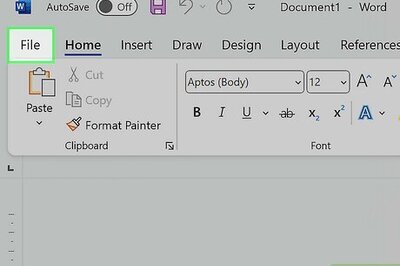
views
On average, a standard one-litre water bottle harbours approximately 240,000 plastic fragments, as revealed by a recent study. The researchers found that many of these fragments have gone unnoticed in the past, implying that health risks associated with plastic pollution might be significantly underestimated.
Published in the Proceedings of the National Academy of Sciences on Monday, this peer-reviewed study is the inaugural examination of bottled water specifically targeting “nanoplastics” – plastic particles less than 1 micrometre in length, or one-seventieth the width of a human hair. The results indicate that bottled water may carry up to 100 times more plastic particles than previously thought, as prior studies only considered larger microplastics ranging from 1 to 5,000 micrometres.
Nanoplastics present a heightened risk to human health compared to microplastics, as their smaller size enables penetration of human cells, entry into the bloodstream, and potential impact on organs. Additionally, these particles can traverse the placenta, reaching the bodies of unborn babies. While scientists have long suspected the existence of nanoplastics in bottled water, the lack of technology for identifying individual nanoparticles has been a limitation until now.
To tackle this obstacle, the study’s co-authors devised a novel microscopy technique, implemented a data-driven algorithm, and applied both to examine approximately 25 one-litre water bottles obtained from three prominent US brands (brands unspecified by the researchers). The analysis revealed 110,000 to 370,000 minuscule plastic particles per litre, with 90% of them categorised as nanoplastics.
“The study offers a potent tool to confront the hurdles in nanoplastics analysis, potentially filling the current knowledge gap regarding plastic pollution at the nano level,” says Naixin Qian, the lead author and a chemistry graduate student at Columbia University. Beizhan Yan, the co-author and an environmental chemist at Columbia University, emphasizes, “Previously, this was a dark, uncharted area. Toxicity studies were essentially speculative about its contents. This breakthrough opens a window, allowing us to explore a previously hidden world.”

















Comments
0 comment